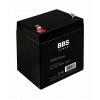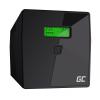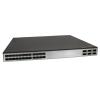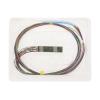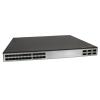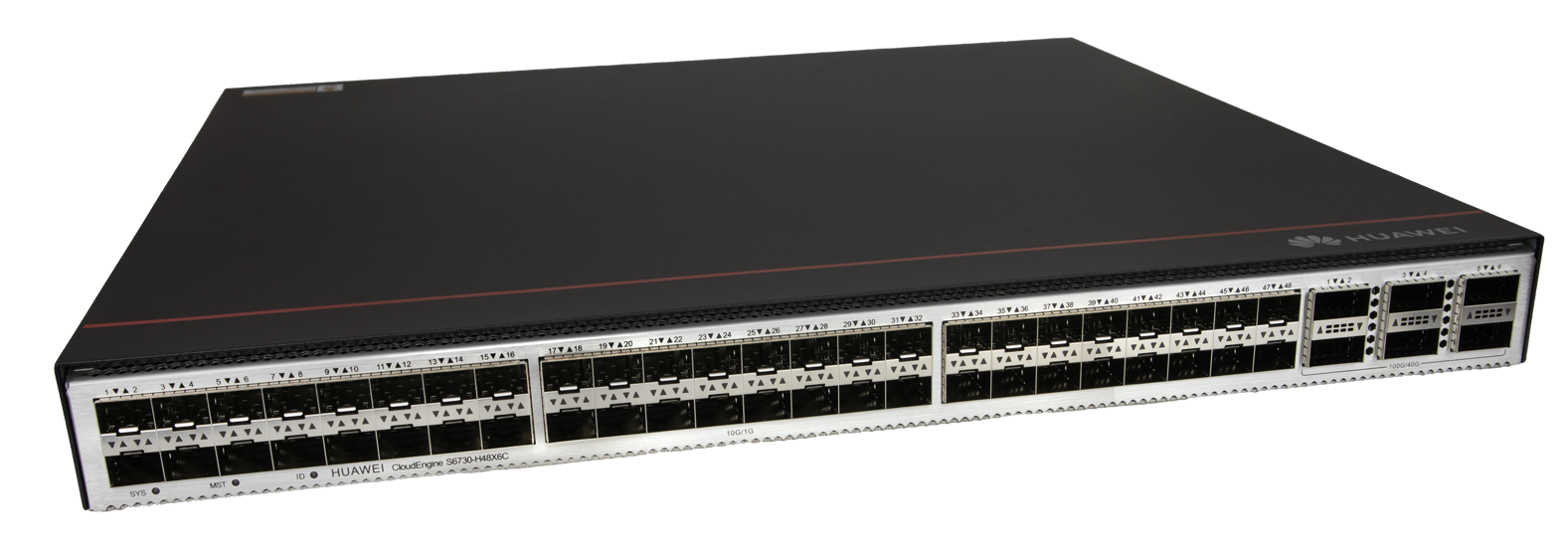-
€
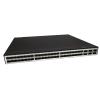
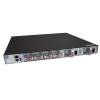
El Huawei S6730-H48X6C es un switch de clase Enterprise de la familia CloudEngine. Cuenta con 48 ranuras SFP+ (10 Gbps) y seis ranuras QSFP28 (100 Gbps), además de funciones de gestión avanzadas. Ofrece compatibilidad total con routing, incluyendo BGP y BGP4+, compatibilidad con MPLS y SVF, y funciones de seguridad avanzadas. Puede funcionar como controlador de acceso inalámbrico (WAC - Wireless Access Controller) y controlador de punto de acceso, lo que reduce la cantidad de dispositivos utilizados en la red. El dispositivo está diseñado para aplicaciones de ISP, como switch de agregación en grandes redes de campus o como switch de acceso en un centro de datos. Gracias a sus amplias capacidades de gestión y alto rendimiento, el S6730-H48X6C puede utilizarse como switch principal en la mayoría de las redes pequeñas.
El dispositivo se aloja en una carcasa para montaje en Rack de 19" y el kit incluye todos los accesorios de montaje necesarios. La refrigeración activa se implementa mediante cuatro módulos de ventilación con flujo de aire front-to-back: el aire se aspira desde los puertos y se expulsa por la parte posterior. El kit incluye dos módulos de alimentación PAC6000S12 que pueden funcionar de forma redundante; si uno falla, el otro asume el control. El rango de voltaje de entrada es de 100-240 V AC, el consumo máximo del switch es de 291 W y el consumo típico con una carga del 30 % es de 165 W.
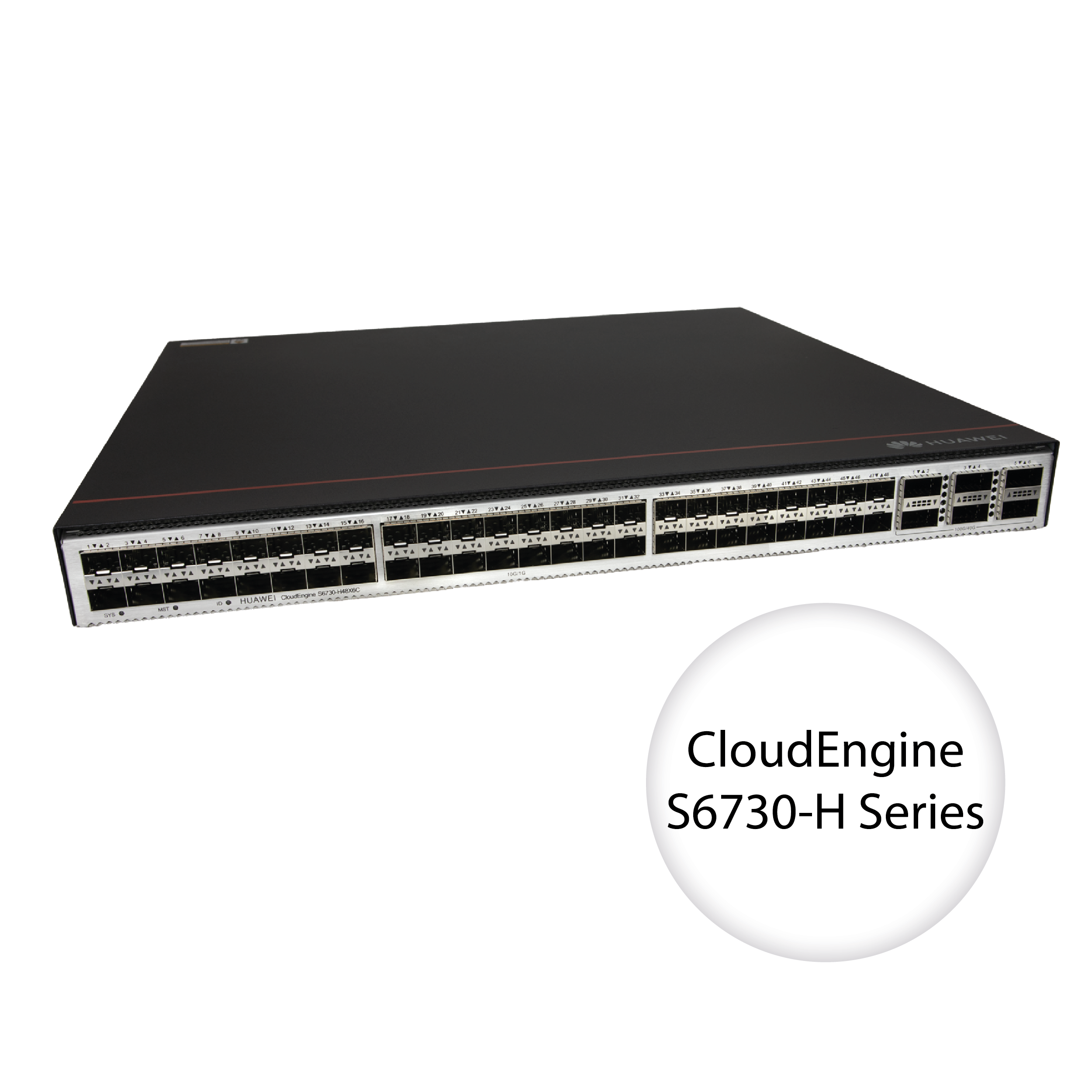
CloudEngine serie S6730-H
El producto ofrecido es un switch de la serie CloudEngine S6730-H. Ofrece funciones avanzadas de gestión de Layer 3 y admite routing, incluyendo BGP y BGP4+. Permite la monitorización en tiempo real de la pérdida de paquetes y el rendimiento de la red mediante la tecnología iPCA y el protocolo TWAMP. Es compatible con VRRP (Virtual Router Redundancy Protocol) y permite la implementación de una conexión de uplink backup. El S6730-H puede conectarse a varios switches mediante múltiples conexiones.
El dispositivo es compatible con iStack, un stacking inteligente que permite combinar varios switches en un solo dispositivo (desde una perspectiva de gestión). Puede acceder al panel de gestión a través de la nube o mediante otros métodos (puede encontrar una lista en las especificaciones). El switch cuenta con numerosas funciones de seguridad, incluyendo protección contra los ataques más comunes.
Soporte WAC
El S6730-H puede funcionar como un WAC (Wireless Access Controler). Administra hasta 1000 puntos de acceso y también admite SVF como switch maestro. La tecnología SVF permite la virtualización física de la red, lo que permite virtualizar una red compuesta por switches de núcleo/agregación, switches de acceso y puntos de acceso como un superswitch, simplificando considerablemente la gestión. En redes grandes, la compatibilidad avanzada con QoS, que incluye compatibilidad con algoritmos avanzados de control y colas, garantiza un rendimiento de red de alta calidad.
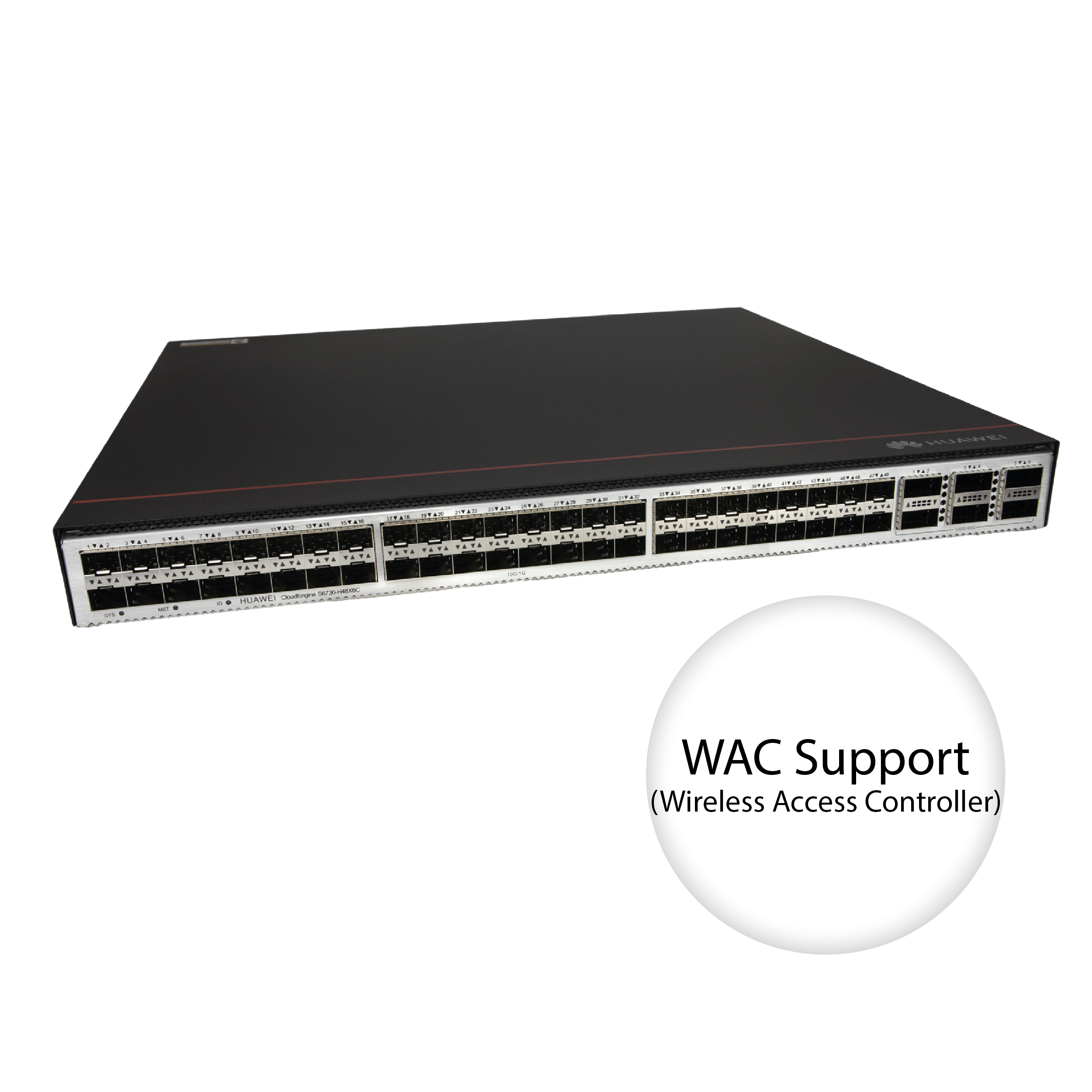
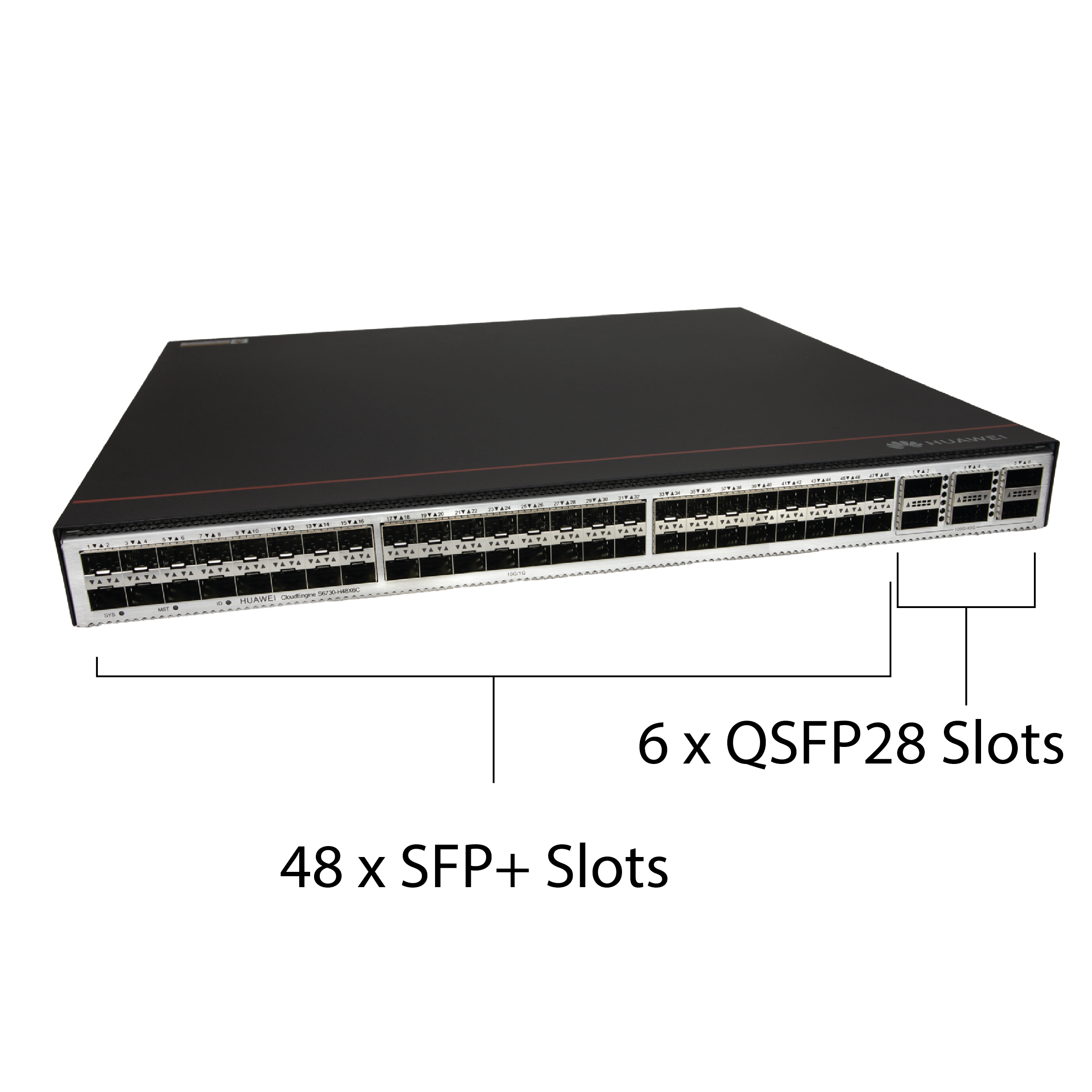
48 ranuras SFP+, 6 ranuras QSFP28
El switch cuenta con 48 ranuras SFP+ con un rendimiento de 10 Gbps y seis ranuras QSFP28 con un rendimiento de 100 Gbps. La capacidad total de conmutación es de hasta 2,16 Tbps. El dispositivo puede gestionar un tráfico muy alto, garantizando al mismo tiempo el correcto funcionamiento de toda la red. El S6730-H48 es una excelente solución para ubicaciones donde se desea basar la infraestructura de red principal en 10 Gbps.
Dos fuentes de alimentación de AC
El kit incluye dos módulos de fuente de alimentación PAC600S12, diseñados para funcionamiento redundante (1+1 power backup). En caso de fallo de alimentación, la otra fuente de alimentación asume el control. El rango de voltaje de entrada es de 100-240 V AC, el consumo máximo del switch a plena carga es de 291 W y su consumo a carga típica (30 %) es de 165 W.
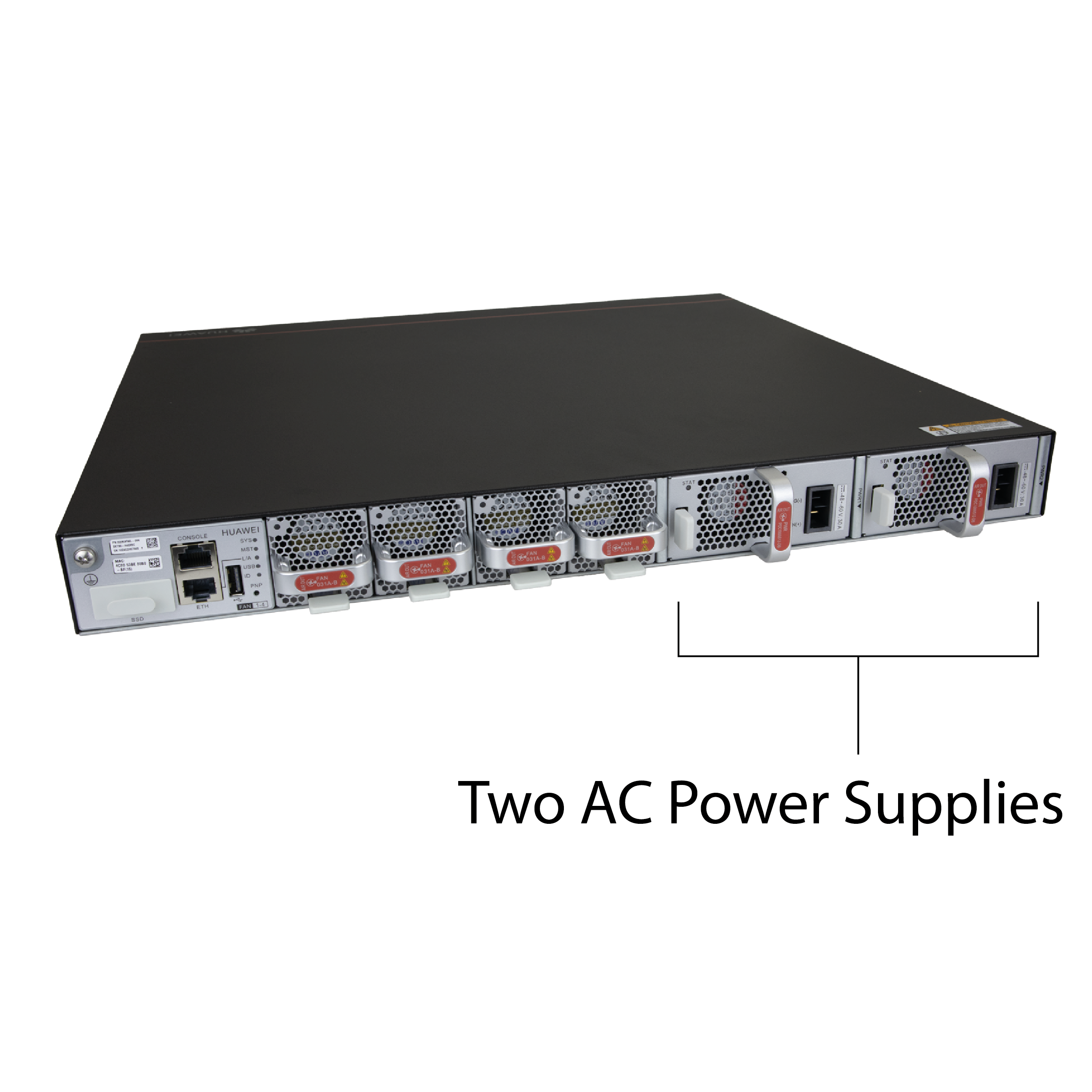
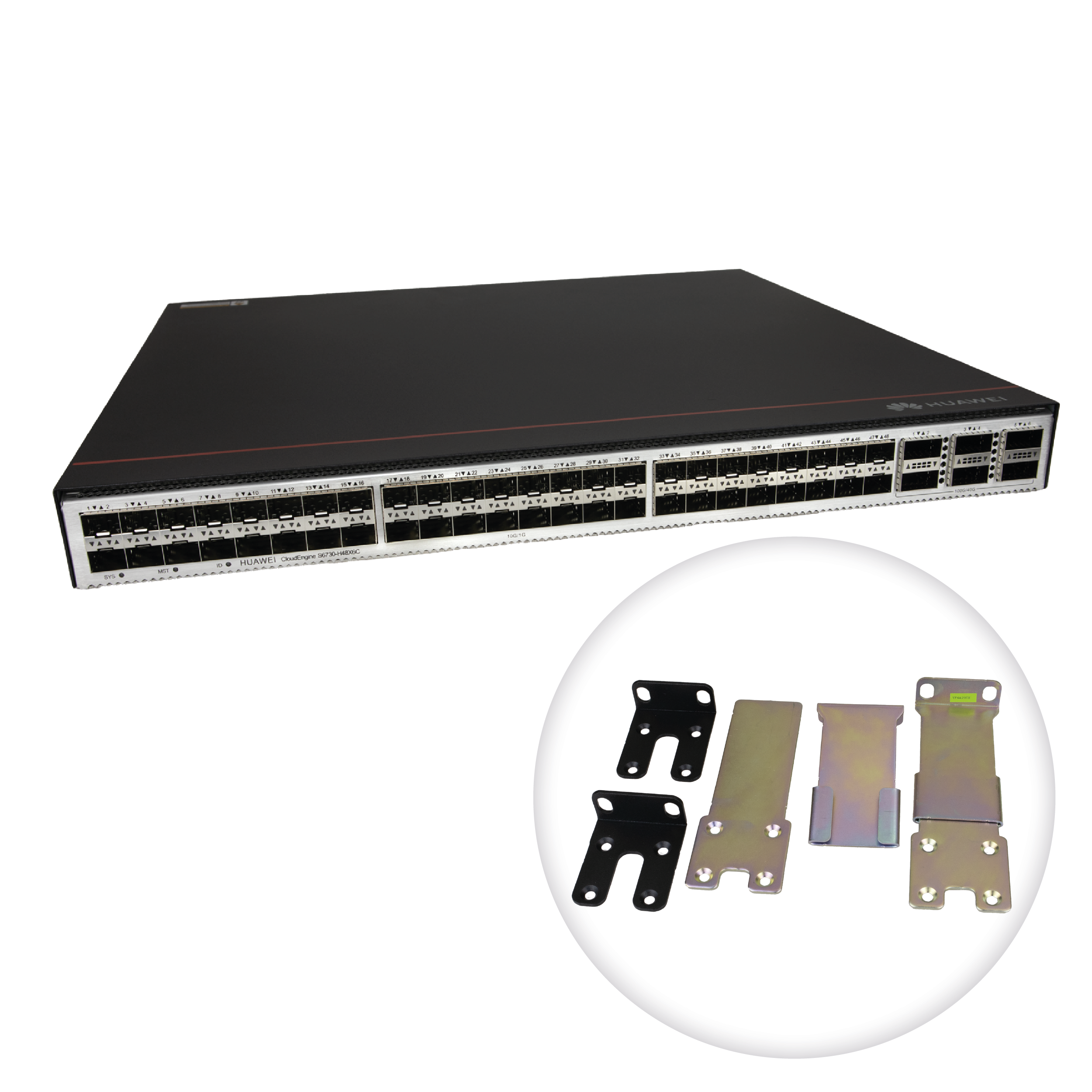
Refrigeración activa, carcasa Rack 19"
La carcasa del switch está diseñada para su montaje en un rack de 19" con una altura de 1U. El kit incluye los accesorios de montaje necesarios. El dispositivo cuenta con cuatro módulos de ventilación que proporcionan refrigeración activa durante su funcionamiento. Cada módulo se puede sustituir rápidamente sin necesidad de desmontar toda la carcasa. Los ventiladores permiten un flujo de aire front-to-back, con el aire aspirado por los puertos y expulsado por la parte trasera del switch.
Uso
Gracias a su gestión avanzada y alto rendimiento, este producto es ideal para una amplia gama de redes. Una de sus principales aplicaciones son las redes ISP, especialmente las redes MAN (Metropolitan Area Network). El dispositivo también puede utilizarse como switch de agregación en redes de campus, donde también puede actuar como controlador de punto de acceso. Otra aplicación podría ser como switch de acceso en diversos tipos de centros de datos. Independientemente de su uso previsto, el S6730-H es un dispositivo que muchos administradores y usuarios apreciarán.
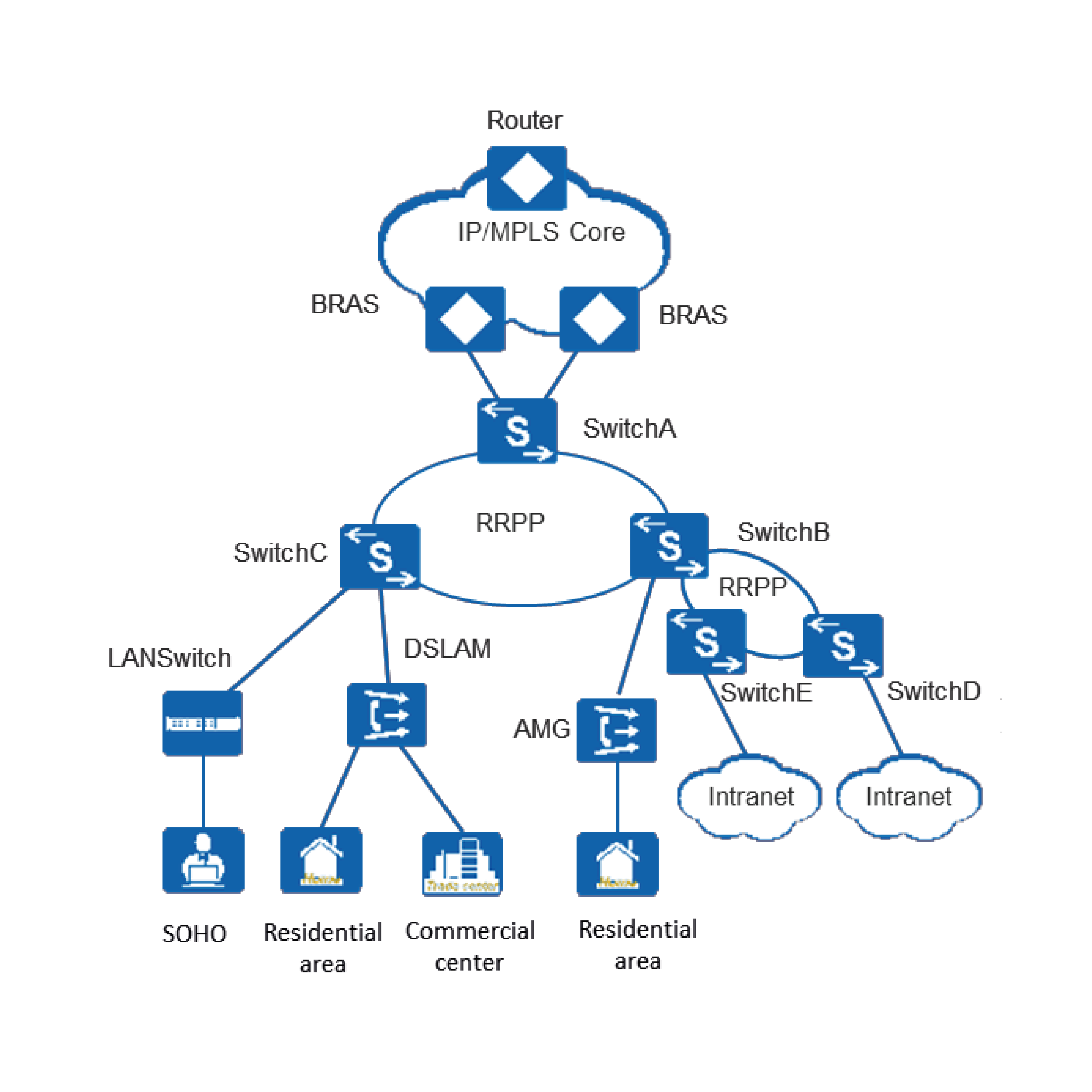
Especificación
| Huawei S6730-H48X6C | |
| Puertos |
48 ranuras SFP+ 10 Gb/s 6 ranuras QSFP28 40 / 100 Gb/s |
| Licencia |
100 Gb/s N1 Basic Software |
| Dimensiones |
43.6 mm x 442.0 mm x 420.0 mm (1.72 in. x 17.4 in. x 16.5 in.) |
| Altura | 1 U |
| Entrada de alimentación |
Rango de voltaje sugerido: 100 - 240 V AC, 50/60 Hz Rango de voltaje máximo: 90 - 290 V AC, 45 - 65 Hz |
| Potencia/corriente de entrada máxima | 600 W, 8 A |
| Consumo de energía típico (30 % de carga, probado según el estándar ATIS) | 165 W |
| Consumo máximo de energía (100 % de carga, potencia máxima del ventilador) | 291 W |
| Rango de temperatura de funcionamiento | De -5 a 45 C |
| Temperatura de almacenamiento admisible | De -40 a 70 C |
| Volumen | < 65 dB(A) |
| Protección contra sobretensiones de la fuente de alimentación | ±6 kV modo diferencial, ±6 kV modo común |
| Fuentes de alimentación | 2x 600 W AC |
| Humedad del aire admisible | 5%-95% sin condensación |
| Enfriamiento | Activo, 4 fans |
| Liberación de calor | Refrigeración activa con ventiladores, la velocidad se ajusta a la carga |
| Propiedades del software | |
|---|---|
| MAC |
Hasta 384k direcciones MAC Estándar IEEE 802.1d MAC address learning and aging MAC adres static / dynamic / blackhole Filtrado de paquetes basado en la dirección MAC de origen |
| VLAN |
4K VLANs Guest / voice VLAN GVRP MUX VLAN Asignación de VLAN según dirección MAC, protocolo, subred IP, políticas y puerto VLAN mapping |
| ARP | Estático/dinámico |
| Routing IP |
Routing estático RIP v1/2, RIPng OSPF, OSPFv3 IS-IS, IS-ISv6 BGP, BGP4+, ECMP Routing policy Hasta 256k FIBv4 Hasta 80k FIBv6 |
| Interoperabilidad |
VBST (VLAN-Based Spanning Tree) con PVST, PVST+ y RPVST LNP (Link-type Negotiation Protocol), similar a DTP VCMP (VLAN Central Management Protocol), similar a VTP |
| Servicios inalámbricos |
Control de puntos de acceso, gestión de dominios de AP, configuración de plantillas de AP Gestión de radio, estadísticas unificadas, gestión centralizada Servicios básicos de WLAN, QoS, seguridad, gestión de usuarios CAPWAP, nálisis de espectro, tag / terminal location |
| Ethernet loop protection |
Topología ring y multi-instance RRPP Topología Smart Link tree Smart Link multi-instance Milisecond-level protection switchover SEP ERPS (G.8032) BFD (para OSPF, IS-IS, VRRP y PIM) STP (IEEE 802.1d), RSTP (IEEE 802.1w), MSTP (IEEE 802.1s) BPDU / root / loop protection |
| MPLS |
MPLS L3VPN MPLS L2VPN (VPWS/VPLS) MPLS-TE MPLS QoS |
| Propiedades de IPv6 |
Neighbor Discover (ND) PMTU IPv6 Ping, IPv6 Tracert, IPv6 Telnet ACL basadas en la dirección IPv6 de origen/destino, puertos Layer 4 o tipo de protocolo Multicast Listener Discovery snooping (MLD v1/v2) Direcciones IPv6 configurables a sub-interface, VRRP6, DHCPv6, L3VPN |
| Multicast |
IGMP v1/v2/v3 snooping IGMP fast leave Multicast forwarding en VLAN Multicast replication entre VLANs Multicast load balancing entre puertos en un enlace troncal Multicast controlable stadísticas de tráfico multicast basado en puerto IGMP v1/v2/v3 PIM-SIM, PIM-DM, PIM-SSM MSDP Multicast VPN |
| QoS / ACL |
Limitar el tráfico inbound y outbound Packet redirection Port-based traffic policing Two-rate three-color CAR HQoS Hasta 8 colas por puerto Algoritmos de cola DRR, SP, DRR+SP WRED Re-marking de encabezados 802.1p y DSCP paquetes Filtrado de paquetes Layer 2 - Layer 4 (filtrado de tramas de error) basado en:
Colas y modelado de tráfico por puerto, en función de las colas |
| Seguridad |
Jerarquía de usuarios y protección de contraseñas Protección contra ataques DoS, ARP, ICMP Binding de direcciones IP, MAC, número de puerto y VLAN ID Aislamiento de puertos, seguridad de puertos, sticky MAC MAC Forced Forwarding (MFF) Balckhole MAC address Límite máximo de direcciones MAC Autenticación IEEE 802.1X Límite de usuarios por puerto Autenticación AAA, RADIUS y HWTACACS NAC SSH V2.0 HTTPS Protección CPU Lista negra y lista blanca Rastreo del origen de ataques de paquetes IPv6 como ND, DHCPv6 y MLD Cifrado de paquetes de gestión (IPSec) ECA Deception |
| Fiabilidad |
LACP E-Trunk Ethernet OAM (IEEE 802.3ah e IEEE 802.1ag) ITU-Y.1731 DLDP LLDP BFD para BGP / IS-IS / OSPF / routing estático |
| SVF |
Actúa como nodo maestro para la virtualización de switches y puntos de acceso (virtualización de varios dispositivos como uno solo). Arquitectura de cliente de dos niveles Los servicios de AS se pueden configurar de forma independiente. Los servicios no compatibles con las plantillas se pueden configurar desde el nodo maestro. Se permiten dispositivos de terceros entre el nodo maestro de SVF y los clientes |
| IPCA |
Marcado de paquetes de servicio para obtener información en tiempo real sobre el número de paquetes perdidos y la tasa de pérdida de paquetes Medición del número de paquetes perdidos y la tasa de pérdida de paquetes en la red y en dispositivos individuales |
| Gestión |
Gestión basada en la nube Prueba de cableado virtual SNMP v1/v2c/v3 RMON NMS (web) Registros y alarmas del sistema GVRP MUX VLAN 802.3az EEE (Energy Efficient Ethernet) NetStream Telemetria |






 Polski
Polski English
English Italiano
Italiano Español
Español Čeština
Čeština Српски
Српски Deutsch
Deutsch Ελληνικά
Ελληνικά Slovenský
Slovenský

